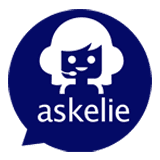The AI bubble is already forming, even if most organisations have not started blowing theirs yet. Every few decades the world finds a new bubble to inflate. We have seen it all before: dot-com, crypto, NFTs, metaverse, and now AI. The headlines are breathless, the LinkedIn posts are endless, and the forecasts are mind-bending. But here is the twist. Everyone is talking about the AI bubble, yet most organisations have not even started blowing theirs yet. They are still standing on the sidelines, watching others puff up ideas, pilots, and promises that may or may not last.
The Hype and the Hesitation
The hype around AI is real. You cannot open your inbox without a vendor announcing a breakthrough. Every product claims to be powered by AI, from your calendar app to your toaster. Analysts predict trillion-pound markets and investors pile in. Yet when you look inside most businesses, the reality is quite different. The AI revolution that everyone is talking about has not actually reached the day-to-day work of most teams.
Many leaders are stuck in a curious middle ground. They believe AI will change everything, but they are not sure where to start. They know they need to be part of it, but they are not ready to commit budget, people, or risk to untested ideas. So they wait. They attend conferences, collect slides, and plan pilots that never quite move from concept to delivery.
If your AI strategy still lives in a PowerPoint deck, you are not part of the bubble. You are still outside the shop window looking at the balloons.
Why the AI Bubble Has Barely Started
Let us be honest. AI is not plug and play. It needs clean data, clear governance, and a proper foundation. Most organisations are dealing with years of technical debt, scattered data, and processes that were never designed for automation. AI on top of that is like putting a jet engine on a bicycle. It will move, but not in a straight line.
There are also real concerns about compliance and reputation. With new laws like the EU AI Act and ongoing updates to GDPR, leaders are cautious. They know one data mistake can turn into a public headline. Then there is the skills gap. Everyone wants AI talent, but few can find or afford it.
Another major blocker is what we call pilot paralysis. Companies spend months designing proofs of concept that tick boxes but never scale. They chase novelty instead of impact. By the time they finish testing, the technology has already moved on.
So while the world debates whether the AI bubble will burst, most organisations have not even inflated theirs. They are still trying to find the pump.
The Vendor Hot Air Problem
Here is the other side of the story. The hype does not only come from the media. It is fuelled by vendors who rebrand every old tool as “AI-powered.” You will find “AI assistants” that are really just macros, “AI insights” that are pre-set dashboards, and “AI chatbots” that do little more than follow scripts.
We have reached the stage where even your inbox cleaner claims to be a generative AI platform. This creates confusion and scepticism. Businesses do not know what is real anymore. When everything is labelled AI, nothing stands out as intelligent.
The truth is that many so-called AI products are simply automation in new packaging. There is nothing wrong with automation; it is valuable and necessary. But calling it AI does not make it smarter. It just adds more hot air to the bubble.
The real test of any AI solution is simple: does it deliver measurable results that make your business faster, safer, and more consistent? If not, it is hype dressed as progress.
Where askelie® Fits In
At askelie® we have never been interested in chasing the bubble. Our focus is building sustainable automation that actually works. We call it hyperautomation, which means using AI intelligently, not extravagantly. Our platform ELIE (Ever Learning Intelligent Engine) is designed to deliver results, not noise.
We built ELIE to solve real operational problems. Whether it is processing invoices, verifying suppliers, managing contracts, or ensuring accessibility, ELIE automates the work that slows organisations down. It does not replace people. It removes the repetitive and error-prone parts of their jobs so they can focus on decisions, not data entry.
Take intELIEdocs, our intelligent document processing engine. It captures, extracts, and validates information from any document type in seconds. What once took hours now takes moments. There is no hype there, just measurable productivity.
Or askTARA, our supplier risk assistant. It automates questionnaires, checks compliance, and calculates risk scores across thousands of suppliers without manual tracking. That is AI with purpose.
And askVERA, designed for accessibility. It transforms complex information into Easy Read formats, supporting neurodiverse users and public sector compliance. That is AI being used to make information more inclusive, not just more impressive.
These are not experimental tools. They are operational systems already delivering value in the UK and globally.
The Substance Bubble
We think of AI adoption like blowing a bubble. If you rush, it bursts quickly. If you take time, build structure, and use the right tools, it lasts. The goal is not to avoid the AI bubble; it is to build one filled with substance.
Our clients do not ask for flashy demos. They ask for working solutions that fit within their security, compliance, and budget frameworks. That is what ELIE provides. Every part of the platform is built around secure private AI principles. No data leaves your environment, no public training models are used, and no information is shared without consent.
This approach ensures that when the hype fades, your automation remains solid. It is not about being the loudest in the AI space; it is about being the most consistent.
When the Bubble Pops
Every technology cycle ends the same way. The noise fades, the unsustainable players fall away, and the real innovators remain. The same will happen with AI. Those who built inflated promises will see them pop. Those who built with discipline and purpose will thrive.
When the AI bubble deflates, organisations that focused on real outcomes will barely notice. Their systems will still be working, their processes will still be running, and their teams will still be saving time.
The ones who suffer will be those who chased hype without understanding what they were building. They will spend more time explaining what went wrong than delivering value.
So Have You Started Blowing Yours Yet?
AI is not a future trend anymore; it is an operational necessity. The question is not whether there is an AI bubble but whether your organisation has started building one that is worth having.
If you are still planning pilots or waiting for certainty, now is the time to move. Start small, automate one process, and learn as you go. The beauty of the ELIE platform is that it allows you to start where you are and grow safely. You can evaluate it without migration costs, set up your configuration yourself, and decide based on real results.
The next 12 months will separate the talkers from the doers. The ones who start building intelligent automation today will be the ones who stay ahead when the excitement cools.
Conclusion
The AI bubble is not something to fear. It is something to shape. The world will always chase new trends, but value comes from what lasts after the noise fades. AI should not be a press release; it should be a working system that makes life easier and business stronger.
At askelie® we believe that AI should be practical, private, and proven. The bubble may burst for some, but for those building real capability the future looks steady.
So ask yourself: have you even started blowing yours yet?


